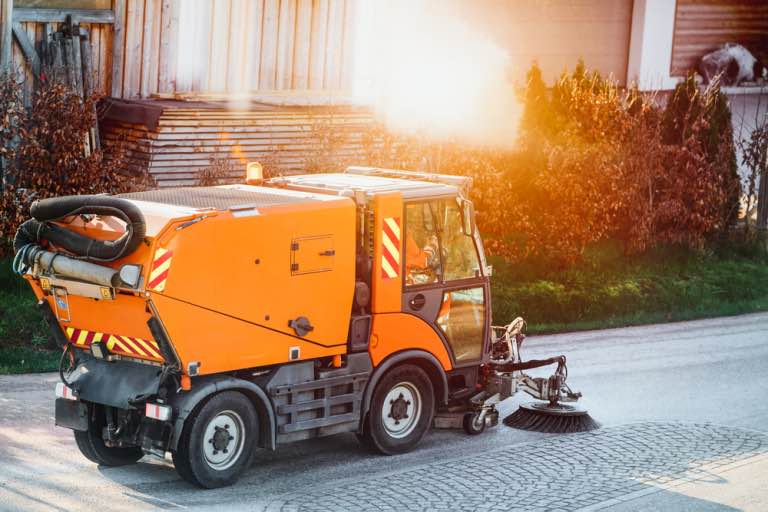Gravel roads are simple, unpaved tracks made from small to medium rocks, sand, and clay. They appear everywhere, particularly where development is still progressing. They perform better than roads without gravel, though they tend to kick up dust.
Controlling dust on gravel roads isn’t hard. To ensure good value, work with a reliable company that offers genuine products. You might even consider letting professionals handle it since their experience usually leads to better outcomes.
This blog is here to provide you with some practical advice for keeping dust down on these types of roads.
Dust Control Products
Dust control products are the most effective solution to minimizing gravel road impact. These include agents like magnesium and calcium chloride.
These two are the most popular and work by bringing moisture into the soil particles to bind them together. Gravel will become less vulnerable to soil erosion and dust.
Dust control solutions are best applied in late spring when the rains have ended and the surfaces are still humid. Applying them during heavy rains is inadvisable because they will be quickly washed away.
The product must be high quality to achieve incredible outcomes and maintain surface stability over time.
Install Windbreakers
Another effective technique for managing dust on gravel roads is installing windbreakers. Dust is not just the problem but also the appearance of adjacent areas.
As the term suggests, windbreakers are structures that act as a wall against the incoming wind on both sides of the road. They could be a fence-like shrub plantation or an actual fence. Windbreakers may not be as practical when applied to one side of the road.
Water the Road
You can also water the road to reduce dust production. Water naturally bonds to many particles, including gravel and sand. It reduces and eventually prevents air from entering the surface, producing little or no dust.
For large-scale surfaces, you may use more robust equipment like sprinklers linked to lorry tankers. Handheld sprayers are practical for small areas. Over time, this might also attract grass growth around the area, making the issue even better managed.
Add More Gravel
The amount of gravel also influences how much dust is produced when traffic is on the road. You may have put too little, or it has been cast to the sides over time. You must add more or distribute the dispersed one evenly.
There will be minimal dust emissions when the gravel layer is higher. Regular maintenance is also highly recommended to determine when to re-gravel.
Reduce Traffic on the Road
The leading cause of dust on gravel roads is how much traffic they withstand regularly alongside climatic issues. For instance, if that’s the only route for nearly all vehicles, from cars to lorries and heavy-duty trucks, there will likely be intensive dust production.
You can reduce traffic by finding an alternative route for large trucks or distributing vehicles equally. Furthermore, speed bumps can prevent drivers from speeding and leaving large dust clouds.
Use Dust Depressants
Besides the two main dust control products mentioned earlier, many other depressants exist on gravel roads. They include non-organic petroleum like lignosulfonates, resins, petroleum-based depressants, and emulsified and cutback asphalt.
Other experts recommend synthetic polymer binders (polyvinyl acrylics and acetates), which are also effective.
Last on the list are electrochemical soil binders, which neutralize soil particles to increase water absorption. Some examples are sulfonated petroleum, bentonite, and ionic stabilizers. Dust suppressants are used in powder or liquid form after being blended with water.
Install Permeable Pavers
You can never go wrong with permeable pavers to manage dust on gravel roads. This technique is quite long-lasting and holds the stones closely together. Pavers are placed on either fully or partially gravel roads on weaker parts.
Permeable pavers also prevent the gravel from escaping into unwelcome areas. With these, you will have to employ other techniques repeatedly.
Choosing Dust Control Solutions
When choosing a dust control solution, several key points should be considered. Ensure your choice is environmentally friendly and adheres to local dust control regulations, particularly when dealing with gravel roads.
Assess practicality by considering the road size, local weather patterns, and traffic volumes. It’s critical to select a technique that’s feasible under these conditions. Ensure that the costs associated with products and their application are justified by their benefits.
Also, consider other essential factors such as safety, how easy the solution is to apply, whether it requires frequent maintenance, and its compatibility with the types of gravel on your roads. Each of these aspects plays a vital role in dust control.
